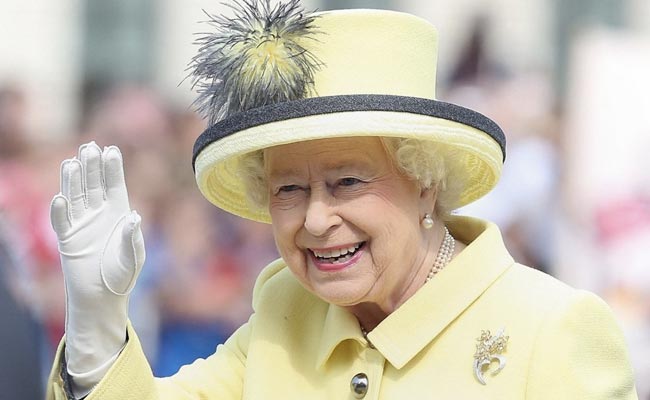Ascending the throne in 1952, Queen Elizabeth led the UK through a time of political upheaval.18
Queen Elizabeth II, whose reign took Britain from the age of steam to the era of the smartphone, and who oversaw the largely peaceful breakup of an empire that once spanned the globe, has died. She was 96.
She died peacefully at her estate in Balmoral, Scotland on the afternoon of Sept. 8, according to a statement from Buckingham Palace.
Ascending the throne in 1952, Elizabeth led the UK through a time of political upheaval. She began her reign as head of an empire, albeit one in decline. By the time of her death, the future of the UK itself was in doubt, with recurrent calls for independence in Scotland and Britain’s exit from the European Union leading to renewed tension in Northern Ireland.
Elizabeth became the UK’s longest-serving monarch in 2015, when she surpassed the record of Queen Victoria, who had ruled from 1837 to 1901. The partner whom Elizabeth described as her “strength and stay,” Prince Philip, her husband of 73 years, died in April 2021, at 99.
Her eldest son, Charles, succeeds her on the throne as King Charles III.
“We mourn profoundly the passing of a cherished sovereign and a much-loved mother,” he said in a statement. “I know her loss will be deeply felt throughout the country.”

She died peacefully at her estate in Balmoral, Scotland
Elizabeth reached the end of her reign with her popularity thoroughly rehabilitated after a period of criticism in the 1990s, which culminated in media-fueled outrage at the family’s muted response to Princess Diana’s death in 1997. When she celebrated 60 years on the throne in 2012, the same year London hosted the Olympic Games, hundreds of thousands of people thronged the streets of London for four days of Diamond Jubilee events.
Her Platinum Jubilee, marking 70 years on the throne, took place in 2022. The celebration of her reign was marked with an appearance on the balcony of Buckingham Palace by a slimmed-down group comprising direct heirs to the throne and their immediate family.
In another symbolic moment of the continuity of monarchy, her heir, Prince Charles, and his first son, Prince William, both paid public tributes to the queen in front of a crowd of tens of thousands who flooded the area around the palace for a live concert.
One of the biggest challenges during her reign came from the media’s unrelenting focus on the private lives of her children and grandchildren.
Prince Charles’ wedding to Lady Diana Spencer in 1981 was seen on television by an estimated 750 million people. Archbishop Robert Runcie, who celebrated the marriage, called it the “stuff of which fairy tales are made” and the couple quickly had two children, Princes William and Harry. But within a few years the marriage was showing signs of strain as Charles and Diana openly snubbed each other on public outings and soon the tabloids were reporting their respective infidelities in minute detail.
Queen’s Counsel
The queen reportedly attempted to rescue her son’s marriage and, with it, the prestige of the crown, urging the couple to stay together and put on a brave face. She had little sympathy for their emotional upheavals, according to biographers.
Nor did the queen have much obvious fondness for the attention-seeking and photogenic Diana, who resisted the conventions of the court and upstaged Elizabeth.
“She simply did not want anything to do with that impossible girl,” Martin Charteris, the queen’s former private secretary, told Carolly Erickson for her 2004 biography, “Lilibet: An Intimate Portrait of Queen Elizabeth II.”
But Diana’s rapport with the public was storing up problems for Elizabeth. Compared with the charismatic princess, the queen appeared more attached to her pet corgis, her horses and her palaces than to her subjects. On a chilly November night in 1992, Windsor Castle, where she had spent part of her childhood, was set ablaze after a tungsten lamp burned a curtain in the private chapel. Some of the castle’s grandest rooms were gutted.
Annus Horribilis
The uninsured castle required tens of millions of pounds’ worth of repair, which the British taxpayer was in no mood to pay: The queen was already under pressure for being tax-exempt. Shortly after the fire, Buckingham Palace announced that both she and Charles would pay taxes on their private incomes.
The Windsor fire came to symbolize the litany of misfortunes – including the divorces of two of her other adult children – that befell the queen in a year she would later describe as an “annus horribilis.”
Journalist Andrew Morton published a tell-all biography of Princess Diana, with help from the princess herself. Another of the queen’s daughters-in-law, Sarah Ferguson, was photographed tanning in the company of a doting lover and Charles and Diana finally announced the end of their marriage.
When Diana was killed in a car crash in Paris on Aug. 31, 1997, along with her lover, Dodi Al Fayed, a high-profile Egyptian billionaire’s son, an impression began to take hold of the queen as a heartless figure, cut off from the public’s concerns.
‘Show Us’
While the entire country went into mourning, the queen remained at her summer residence at Balmoral Castle in Scotland and initially resisted calls for a flag to be flown at half-staff over Buckingham Palace. “Show us you care,” urged the headline in the Daily Express newspaper. “Speak to Us, Ma’am,” pleaded the Mirror. “Not one word has come from the royal lip, not one tear has been shed in public from a royal eye,” the Sun wrote.
The queen – who had been staying with her grandsons after the death of their mother – finally returned to London five days after the princess’s death, and delivered a televised address. She described Diana as “an exceptional and gifted human being” who had “made many, many people happy,” though she stopped short of expressing personal affection for her late daughter-in-law.
Over time, Charles’s mistress, Camilla Parker-Bowles, emerged from the shadows and was accepted at court. When they married, almost eight years after Diana’s death, the queen was present at a service of blessing in Windsor Castle and hosted a reception for them, although she didn’t attend the civil ceremony. In a sign of Camilla’s full acceptance into royal life, the queen said in 2022 she should be named queen as Charles’ consort.
Early Years
Elizabeth Alexandra Mary Windsor was born on April 21, 1926, in the London district of Mayfair. Initially unable to pronounce her given name, she called herself Lilibet, a nickname that became widely used by close relatives.
“She has an air of authority and reflectiveness astonishing in an infant,” Winston Churchill, later to be the queen’s first prime minister, said of the two-year-old Princess Elizabeth after a visit to her parents. Schooled at home by tutors, little Lilibet was, according to governess Marion Crawford, “very lovable” and fond of horses.
Elizabeth was 10 years old when her life was transformed.
Her uncle, Edward VIII, gave up the crown so that he could marry Wallis Simpson, an American divorcee, and Elizabeth’s father, Prince Albert, reluctantly became King George VI. The family moved to Buckingham Palace and Elizabeth, his first-born, was suddenly heir to the throne. Her memories of the abdication reportedly reinforced her strong sense of public duty, which later became a hallmark of her reign.
Wartime Life
During World War II, the king refused to send Elizabeth and her sister Margaret to Canada, keeping them instead in royal residences outside the capital. When Nazi bombers pounded the East End of London in September 1940, the royal couple visited the victims. Buckingham Palace was also hit by German air raids.
In 1945, with the war drawing to a close, Elizabeth Windsor was allowed to join the Auxiliary Territorial Service, the women’s branch of the British army, as a second lieutenant, becoming the first female member of the royal family to be a full-time active member of the services. She took a six-week course in driving and vehicle maintenance, learning to steer convoy trucks and strip engines.
Once the war was over, the princess made clear she was in love with Prince Philip of Greece, whom she had met in 1939 when the royal family visited Dartmouth Naval College. The two were betrothed in July 1947 and married four months later at Westminster Abbey. Philip became Duke of Edinburgh. Charles, the heir to the throne, was born a year later.

File photo of Queen Elizabeth II with Prince Philip
Photo Credit: Getty Images
Becoming Queen
In the years following the war, the British Empire was starting to come undone. India shook off British rule in August 1947, Burma, now known as Myanmar, won independence in 1948, and Ireland declared itself a republic in 1949. In 1952, on a trip to Kenya, Princess Elizabeth learned of her father’s death. She immediately flew back to Britain, to be greeted as queen by Churchill as she disembarked from her plane.
Elizabeth was crowned in Westminster Abbey in June 1953 in a televised ceremony, a first for the monarchy, that was watched by more than 20 million people, half of Britain’s adult population.
While the monarch’s role was a largely ceremonial one and Elizabeth had next to no say in government matters, she met each of her prime ministers once a week for a confidential discussion of which no record was kept, giving her a unique perspective on the life of her nation. Her final premier, Liz Truss, was invited to form a government in a meeting at Balmoral Castle on Sept. 6.
In those weekly meetings, the queen listened to concerns over domestic and foreign policy, trawled through daily red boxes of state briefings, and helped smooth diplomatic relations by hosting world leaders. She also kept up a busy schedule of events, including opening ceremonies and meetings with people across the UK and elsewhere, as well as regularly touring Commonwealth countries.
In her initial years as sovereign, the queen forged close ties with Churchill. “Like her father, and her grandfather, she was a natural conservative,” wrote biographer Kenneth Harris.
1969 Documentary
Churchill had served her father, George VI, during the war years, and Elizabeth and her prime minister frequently exchanged admiring letters, according to Churchill biographer Martin Gilbert.
As the 1960s unfolded, with the empire disintegrating, social change gripped Britain. The royal family made a conscious attempt to demystify its image, with the queen, Prince Philip and their children featuring in a fly-on-the-wall television documentary in 1969. They were seen for the first time doing everyday things, such as eating dinner and having a picnic.
While the intention was to present a more modern, informal view of the family, it also opened the door to wider television and press coverage of their activities which over the following years sparked controversy. The monarchy has historically been tinged with an aura of mystery, and as Victorian journalist and economist Walter Bagehot put it: “We must not let in daylight upon magic.” Harris wrote that while the royal family “must rely on the media,” he also said that “beyond a point, the members of the royal family do not want publicity.”
In the Silver Jubilee year of 1977 the decline in deference was illustrated by the release of a single by the English punk band the Sex Pistols called “God Save the Queen.” The record had a defaced picture of the monarch on its cover and contained the lyrics, “God save the queen, the fascist regime.” The BBC banned its staff from playing it on air.
The queen’s relationship with Margaret Thatcher, who became Conservative prime minister in May 1979, was described in the press as cool, though Thatcher denied that in her memoir “The Downing Street Years.”
Two Women
“Of course, under the circumstances, stories of clashes between ‘two powerful women’ were just too good not to make up,” Thatcher wrote. She instead emphasized the queen’s “formidable grasp of current issues and breadth of experience.”
When Thatcher died in 2013, Elizabeth joined the mourners in London’s St. Paul’s Cathedral, the first time she had attended the funeral of a British prime minister since that of Churchill in 1965.
By the turn of the millennium, the popularity of the royals was recovering from the dark days of the 1990s and a new generation of the family was also starting to come on the scene. William and Harry were drawing more media attention, which intensified when William started dating Catherine Middleton, whom he had met at St. Andrews University. The queen’s Golden Jubilee celebrations in 2002, to mark 50 years on the throne, drew bigger crowds than expected.
The eventual royal wedding in 2011, marked by a national holiday, signaled that the rehabilitation was close to complete. William and Kate, who came across as a down-to-earth couple in tune with the times, had helped soften the memories of Charles and Diana’s indiscretions. The birth of their son, George, in July 2013, also delighted the public. Two other children followed.
New Generation
As William and Kate, now the Duke and Duchess of Cambridge, took on more public roles, the queen scaled back, saying at the end of 2016 that she would give up some of her charity work.

Queen Elizabeth seen with the Royal family
Photo Credit: Getty Images
Prince Harry and his wife Meghan Markle, by contrast, decided to give up their duties as working members of the Royal Family and move to the US. Markle, whose mother is Black, said in an interview with Oprah Winfrey in March 2021 that an unnamed senior royal had asked how dark her unborn son’s skin color would be, prompting a rare public response from the queen, who said the issues raised by the couple would be taken very seriously. The Palace also battled to contain a controversy over Prince Andrew’s friendship with convicted sex offender Jeffrey Epstein, with a legal settlement eventually reached in February 2022 after he had stepped down from royal duties. He was also stripped of military ranks and royal patronages, although the queen demonstrated her fondness for her second son by giving him a prominent position at Prince Philip’s memorial service.
With the end of Elizabeth’s reign, the British establishment loses a figure who has been able to connect each of her prime ministers with Churchill and the wartime spirit which has become a key part of the national identity.
David Cameron, the 12th premier to serve under Elizabeth, said that he valued their weekly audiences as an opportunity to draw on “her knowledge, her commitment, her time-tested wisdom” and “an abundance of what I would call ‘Great British common sense,’ the ability to cut through the fuss and see what really matters.”
Spirit of Fun
She was also known for a quiet sense of mischief. According to one widely reported anecdote, when out walking near Balmoral, she ran into a couple of American tourists, who failed to recognize her but were delighted to learn she had a house nearby. “Have you ever met the queen?” they asked. “No,” she replied, before pointing at the plainclothes policeman accompanying her. “But he has.”
That spirit of fun was on display once again at the London Olympics in 2012. The opening ceremony featured the queen in her first movie role, in a short film in which she was met by James Bond actor Daniel Craig at Buckingham Palace. “Good evening, Mr. Bond,” the queen said, before she was apparently taken by helicopter and parachuted in to the Olympic Stadium – a stunt for which she had a stand-in.
“You don’t have to tell her something twice,” said the director, Danny Boyle. “She picks it up straight away, about cameras and angles. She is a good actor.”
In 2022 the Queen delighted the British public when she performed a skit with a CGI version of Paddington Bear. In the sketch, the monarch showed her sense of humor by “revealing” that she kept a marmalade sandwich in her handbag, the snack favored by the fictional bear.





